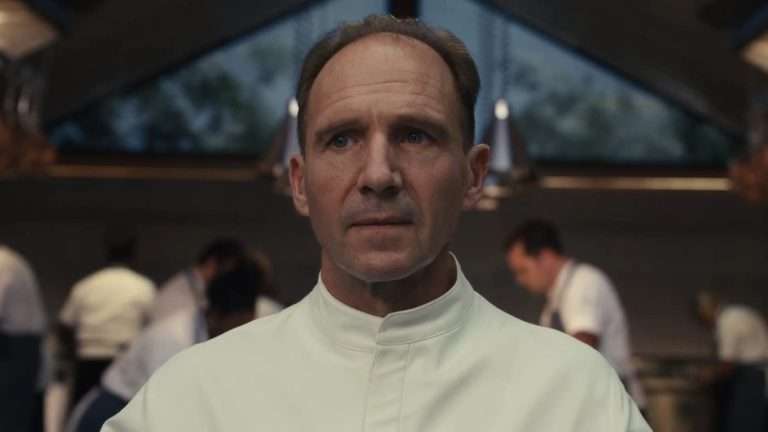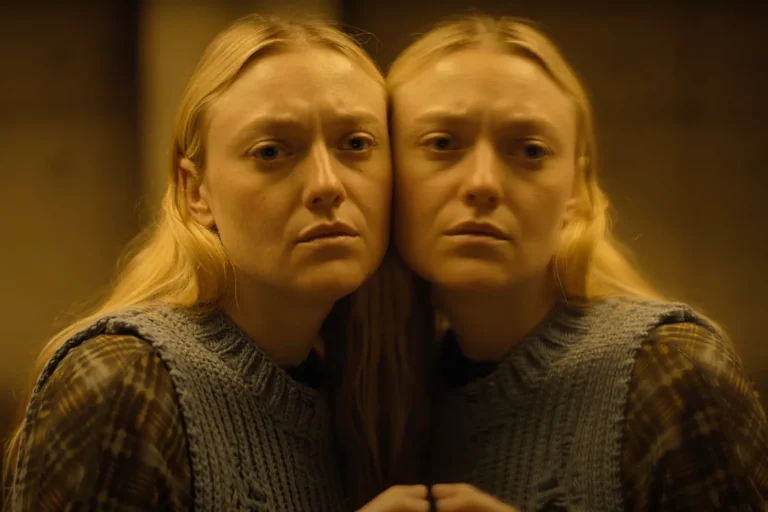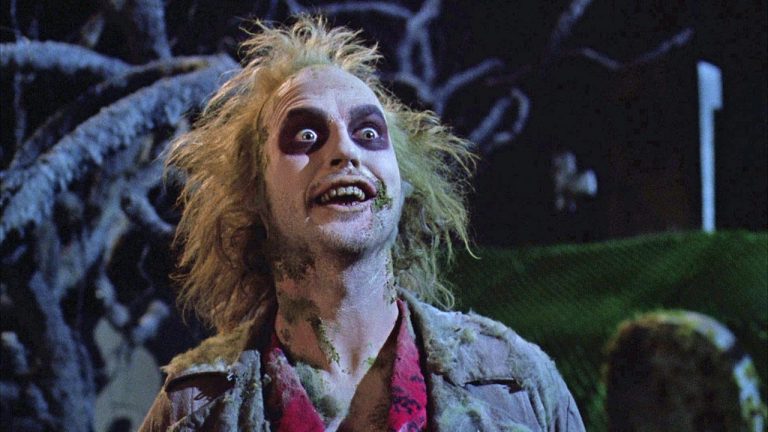A good horror movie can scare the shit out of the audience. But scares only work if the audience is invested in characters. That’s why it is important to create empathy for the characters before you put them in a life-threatening situation. Jennifer Kent’s The Babadook is a great lesson in character building. The film doesn’t rely on cheap scares. The horror stems from the character’s fear. In this article, I’ll discuss some of the techniques that Jennifer applies to create empathy for the characters.
One of the most crucial thing in a screenplay is to make the audience care about the character. The easiest way to create empathy for the characters is by assigning certain traits to them. In his book, Writing for Emotional Impact, Karl mentions three broad umbrella traits- Pity, Admiration, and Humanity. Which means we empathize with characters if we feel pity for them or admire them or see our reflection in them. Here are some specific examples of character traits used in The Babadook:
Treated Unjustly
Samuel’s dad died in a car crash while his mom was giving him birth. His mom (Amelia) is too harsh on him. Sure, he bursts firecrackers, breaks the window with a catapult and brings a homemade gun to the school, but he does that only to protect his mother. At school, the principal informs mom that Samuel has to be separated from other kids due to his behavior. His cousin Ruby doesn’t want him at her birthday party. His mom scolds him for being disobedient and for believing in monsters. At one point Samuel asks his mom, “Why don’t people like me?” This feeling of being mistreated and misunderstood is something we all can relate to.
Similar Read to The Babadook: 5 Screenwriting Lessons You Can Learn From The Breaking Bad Pilot
Amelia is treated unjustly at her workplace. She works at a nursing home for aged people where her boss is bitchy to her. Her sister doesn’t want to visit her because she is too depressing. Even in the moment of emergency, there is no one she can turn to. Both Samuel and Amelia are isolated because they talk without any filters. They are treated unjustly by society and by each other.
Save the Cat/ Pet the Dog
Samuel is not exactly a likable character. He is an annoying kid. He is a danger to the people around him. The evil kid is a popular trope of the horror genre. So, the easiest way to distinguish him from the evil child is by showing his humanity, by giving him ‘save the cat’ moment. Save the Cat pertains to a scene in the movie where a character saves someone more vulnerable than himself at the risk of his own life. Throughout the film, Samuel assures his mom that he will protect her from the monster. And he does that when the moment arises. We empathize with Samuel because of his devotion to mother. This is one of the golden rules for creating empathy- the character should care about something/someone other than himself.
Disability
Disability can salvage an unlikable character. Which is why this trait is generally used for anti-heroes, to compensate for their immoral actions. For instance, a drug lord who is suffering from cancer (Breaking Bad) or a mafia boss who goes to a therapist (Sopranos). In the Babadook, Samuel is developmentally challenged while his mom Amelia is suffering from depression. One shouldn’t use mental or physical disability as a mere tool to create sympathy for characters, the disability should also be central to the plot.
Thrust into Grief
One way to thrust characters into grief is by putting them in a tragic situation. It is no surprise that some of the most remarkable horror movies of recent times- The Babadook, Under the Shadow, Hereditary– are built on a family torn apart by a tragedy. Amelia is a single mom who grieves for her dead husband. It’s important to note that showing your characters crying doesn’t create empathy for them, nor does it reveal their grief. One way to make the character’s grief apparent is by showing the contrast. There are two brilliant scenes at the beginning of the movie that creates empathy for Amelia. One is where she is sitting on a park bench and she watches an infant playing in her mom’s lap. In the other scene, Amelia is in a parking lot and she sees a couple kissing passionately inside a car. These scenes reveal what is missing from her life. Her friends talk about trivial problems like not getting enough time for the gym, while her son just got expelled from the school. It seems like everyone in the world is happy except her.
Character’s Core Wound
Character’s core wound is a tool to make the character’s grief more palpable. The audience doesn’t know characters well enough to grasp the magnitude of their grief. Which is why sometimes it is conveyed through a back story. The core wound is something that appears before the story begins, generally in the first few pages of the screenplay. It reveals, through action or dialogue, the pain and suffering the character has been going through. It is crucial not only for creating empathy but also for revealing the character’s true identity. In the Babadook, the core wound occurs in the very first scene of the movie. It’s a dream sequence that reveals how Amelia lost her husband in a car crash and simultaneously gave birth to Samuel. It is advised to reveal the character’s core wound through action and not through expository dialogue.
Thrust into Danger
It is important to put characters in the situations where they can fail. The good thing about horror is the genre itself provides the death stakes. The horror genre is built on the characters moving into a haunted house or going for adventure at a cabin in the woods. In every horror movie, a character must face a horror element. In The Babadook, the thing that causes the danger is a children book. And the ghost is replaced by a paper mache clown. Amelia throws away the book but it finds its way back and threatens her- “The more you deny, the stronger I become”. We empathize with the character being in an unfavorable situation where she has no control over things.
Attempting to Overcome Fear
In The Babadook, the fear of Amelia is expressed clearly. A children book says that Mr. Babadook will get inside her, kill her dog, then the son. In the end, she will kill herself. A mother who just swore to protect her son now has to protect him from herself. That’s the worst fear of a mother, that she might end up hurting her own child. There is a brilliant scene in the movie where Amelia is watching local news on TV. It shows that a woman in the neighborhood killed her own son with a kitchen knife. And Amelia was holding a similar kitchen knife only a moment ago. We don’t like facing our fears. So we feel sad for characters who try to overcome their fears in the story. That’s what a good horror movie does, it reminds us of our own fears.
It’s an amateur mistake to believe that the more traits you assign to the characters the more audience connects with them. In an interview, John Truby, the author of Anatomy of Story, says that character traits tend to be very superficial elements of a person. He states that only two things keep the audience engaged in the story- the want and the need of the protagonist. The need is also known as a character flaw or internal weakness. We know that every movie is about a hero going after a goal and achieving it. But by achieving that goal he also overcomes that weakness. On the surface level, we watch a movie because we want the hero to achieve his goal. But on a subconscious level, we watch the movie because we want the hero to overcome his weakness or flaw.
Character Flaw
John Truby defines character flaw as a personal problem that is hurting hero in such a fundamental way that it’s ruining his life. In The Babadook, the character flaw of Amelia is that she can’t move on from the past. In a very crucial scene of the movie, Babadook takes the form of the husband and demands to sacrifice the kid. Even in the climactic scene, Amelia has kept her past trauma locked in the basement and she feeds worms to him. In her journey to protect her son, she overcomes the grief of losing her husband. In a way, Babadook is a movie about a woman coming to terms with her grief.
One of the biggest complaints with horror movies is that they don’t spend enough time in building characters. But Jennifer Kent’s The Babadook does a fantastic job of tying horror to the characters.




![Harpoon [2019]: ‘Fantasia’ Review – A self-aware Boat-Movie](https://79468c92.delivery.rocketcdn.me/wp-content/uploads/2019/07/Harpoon-highonfilms2-768x432.jpg)
![Vampires [1998] Review: Style. Swag. Savagery.](https://79468c92.delivery.rocketcdn.me/wp-content/uploads/2019/09/vampires-cover-1-768x432.jpg)


![Fever Dream [2021] Netflix Review – A mysterious eco-fable that doubles down as a metaphor for parental anxiety](https://79468c92.delivery.rocketcdn.me/wp-content/uploads/2021/10/Fever_Dream-Distancia-de-rescate-3-768x321.jpg)
